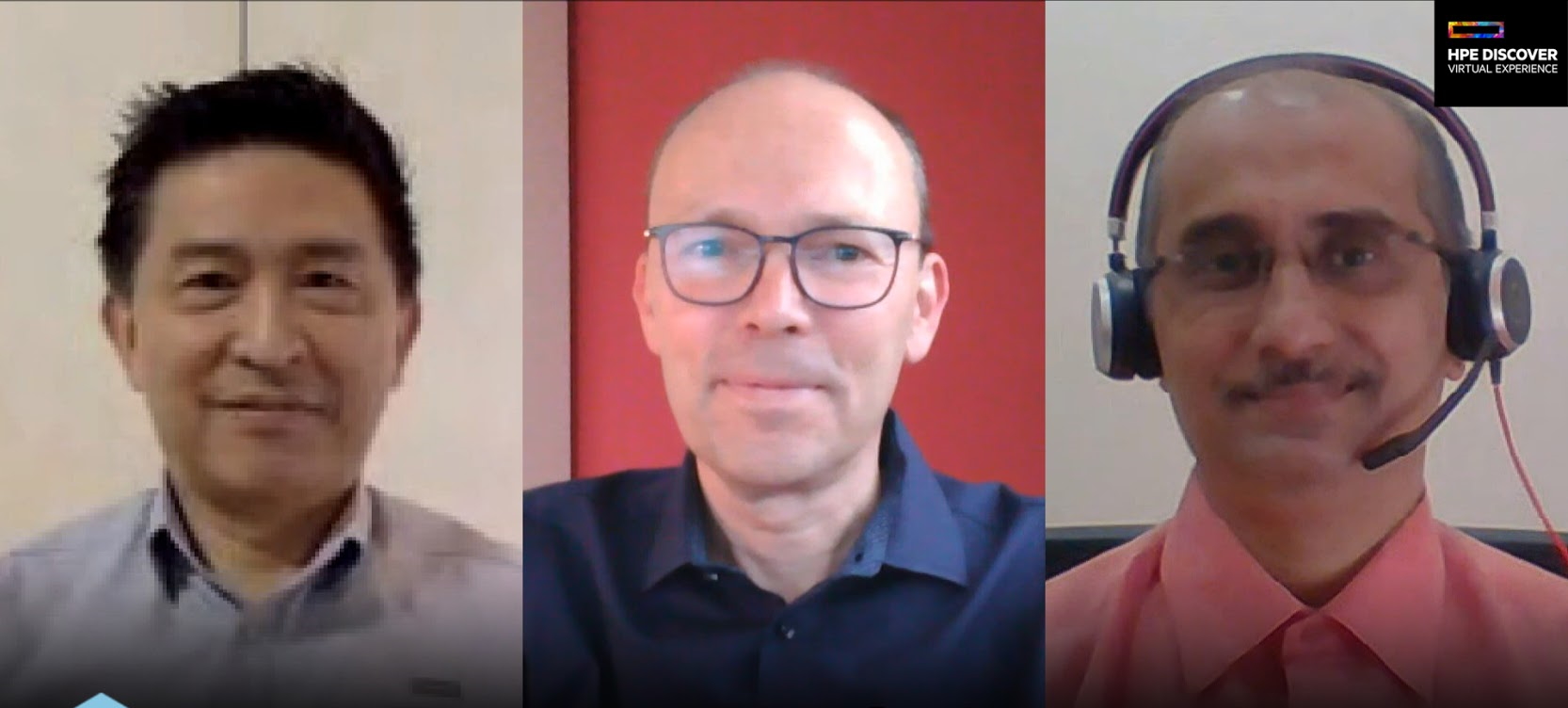 AI
AI
 AI
AI
 AI
AI
When the average person hears that hospitals are sharing information, it may arouse reasonable suspicion. Hospital data contains our most private information, some of which we may not even share with our closest loved ones. But with swarm learning, hospitals are able to use local data to predict and improve the care they offer their own patients while removing private data to collaborate with other hospitals and learn from each other.
“Swarm learning only shares the learnings, not the private patient data. We hope this approach would allow all the different hospitals to come together and unite — sharing the learnings, removing biases so that we have high accuracy in our predictions, and at the same time maintaining privacy,” stated Dr. Eng Lim Goh, senior vice president and chief technology officer for AI at Hewlett Packard Enterprise Co., on the benefits of hospitals using swarm learning.
Dr. Eng Lim Goh (pictured, left); Joachim Schultze (pictured, middle), professor for Genomics & Immunoregulation at the University of Bonn; and Krishna Prasad Shastry (pictured, right), distinguished technologist at HPE, spoke with Dave Vellante, host of theCUBE, SiliconANGLE Media’s mobile livestreaming studio, during the HPE Discover Virtual Experience. They discussed the benefits of swarm learning and how AI is improving how hospitals share and use data. (* Disclosure below.)
[Editor’s note: The following answers have been condensed for clarity.]
People compare [this pandemic] to the Spanish flu of the early part of last century. They talk about the Great Depression, but the big difference this time is technology. Technology has completely changed the way in which we’ve approached this pandemic.
Dr. Goh, I want to start with you. You’ve done a lot of work on this topic of swarm learning. My limited knowledge of this is — we’re borrowing from nature. You think about bees looking for a hive as sort of independent agents, but somehow they come together and communicate. Tell us what we need to know about swarm learning and how it relates to artificial intelligence.
Goh: Dave, that’s a great analogy, using a swarm of bees. That’s exactly what we do at HPE. So let’s use the example here. When deploying artificial intelligence, a hospital does machine learning of the outpatient data that could be biased due to demographics and the types of cases they see more often. Also, sharing patient data across different hospitals to remove this bias is limited, given privacy or even sovereignty restrictions — for example, across countries in the European Union.
HPE swarm learning fixes this by allowing each hospital to still continue learn locally. But at each cycle we collect the learned weights of the neural networks, average them, and send it back down to all the hospitals. After a few cycles of doing this, all the hospitals would have learned from each other, removing biases without having to share any private patient data. That’s the key. So, the ability to allow you to learn from everybody without having to share your private patients, that’s swarm learning.
Professor Schultze, you’re essentially the use case of this swarm-learning application. Tell us a little bit more about what you do and how you’re applying this concept.
Schultze: I’m interested in bringing new technologies to what we call precision medicine, both from the laboratories, but also from computational sciences, marrying them and then basically allowing precision medicine. We assess on different levels, for example, the genome or genes that are transcribed from the genome. We have thousands of such data, and we have to make sense out of this. This can only be done by computation. The hope for the future is that with the new wave of developments in artificial intelligence and machine learning, we can make more sense out of the data that we generate in medicine.
The most exciting thing I have been through in the last three, four, five years is really when HPE introduced us to swarm learning.
Prasad, you’ve been helping Professor Schultze actually implement swarm learning for specific use cases. Describe a little bit about your participation in this whole equation.
Shastry: We have used blockchain as a backbone to implement the decentralized network, and through that we’re enabling a privacy preserved decentralized network without having any control points. One of the use cases we are looking at is looking at the blood transcriptomes. Different hospitals have a different set of transcriptome data, which they cannot share due to the privacy regulations. Now each of those hospitals will train the model depending upon their local data, which is available in that hospital, and share the learnings coming out of that training with the other hospitals.
Professor Schultze, you’ve applied this to really try to better understand and attack the COVID pandemic. Can you describe in more detail your goals there and what you’ve actually done and accomplished?
Schultze: So, we have actually really done it for COVID. The reason why we were trying to do this now is that we generated these transcriptomes from COVID-19 patients ourselves, and we realized that the signal of the disease is so strong and so unique compared to other infectious diseases, which we looked at in some detail. We felt that the blood transcriptome would be a good starting point to identify patients but maybe even more important to identify those with severe diseases. So, if you can identify them early enough, we basically could care for those more and find those treatments and therapies.
Watch the complete video interview below, and be sure to check out more of SiliconANGLE’s and theCUBE’s coverage of the HPE Discover Virtual Experience event. (* Disclosure: TheCUBE is a paid media partner for the HPE Discover Virtual Experience. Neither Hewlett Packard Enterprise Co., the sponsor for theCUBE’s event coverage, nor other sponsors have editorial control over content on theCUBE or SiliconANGLE.)
THANK YOU